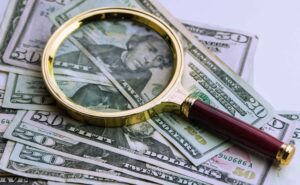How to Start an Emergency Fund and Keep it Going
What Are Emergency Funds For?
An “emergency fund” is a savings account set up for usage in unexpected emergencies. The idea behind an emergency savings account is to provide some kind of financial protection in the event of unforeseen costs, such as medical care or significant house repairs.
Cash or other very liquid assets are typical components of an emergency fund. As a result, you won’t have to resort to high-interest borrowing options like credit cards or unsecured loans, or risk your financial future by dipping into retirement savings.
When you set aside money with the intent of using it during times of financial trouble, you have established an emergency fund. The loss of a job, a serious sickness, or the need for extensive repairs to your house or vehicle are all examples of such events, as are the type of massive economic crises and lockdown experienced in the year 2020.
Factors such as income, costs, and obligations should be considered while determining the ideal amount of an emergency fund. To weather a small healthcare bill or a brief period of unemployment, many financial gurus suggest saving enough to cover anywhere from three to six months’ expenses.
3 Benefits Of Having Emergency Money
It Helps Keep Your Stress Level Down
It’s no secret that worrying about money and feeling stressed out come hand in hand when an unexpected life event threatens your financial stability. Your financial situation is precarious if you don’t have a safety net and are just hoping for the best.
Having the peace of mind that comes from knowing you have a financial cushion to fall back on in the case of an emergency is invaluable.
It Keeps You From Spending On A Whim
‘Out of sight, out of mind,’ as the old adage goes. This is the safest place for your rainy-day funds. When money is as near as your debit card, it might be tempting to blow it on something unnecessary, like a fancy party outfit or a wide screen television.
When money isn’t easily accessible, it’s harder to spend it on a whim.
When you keep your savings in a separate account, you can easily keep track of how much you have and how much you may still need to put away.
It Keeps You From Making Bad Financial Decisions
It’s possible to get your hands on some cash fast via other means, such as borrowing, but at what price? Some of the negatives include interest, fees, and penalties.
How Much Do I Need In It?
Having an emergency fund is important, but the amount you should set aside is situational. Estimate the average cost of the most frequent unexpected costs you’ve faced in the past. Perhaps deciding how much money you want to put away will be easier with that in mind.
It might be tough to save money if you are living paycheck to paycheck or if your earnings fluctuate from week to week or month to month. But even a little sum might provide peace of mind when it comes to one’s financial future.
It might take a while to save up the three to six months of living costs that some financial experts recommend keeping in an emergency fund. Saving only $5 per day might serve as a good starting point. The next step is to save enough money to last for at least a few months.
Spending and earning habits will determine your savings objective. Don’t worry too much about completely restoring your income; just have enough to pay your costs. Housing, utilities, transportation, food, and loan or credit card payments are all examples of essential monthly costs.

How Do I Build An Emergency Fund?
There are a variety of ways to kick off your savings plan. The steps below accommodate a wide variety of scenarios, such as when savings are restricted or when income swings wildly. Even if you have the means to implement all of these ideas, the simplest places to start are with controlling your cash flow or setting aside a part of your tax refund.
Strategy: Create A Savings Habit
Consistent saving helps build any size savings. It’s a quick method to progress. If you don’t save regularly, here are several ways to start:
Goal-setting. Having a financial goal might motivate you. If you are serious about your saving strategy, you should consult with a certified financial advisor, to get the best use for your cash. The emergency fund may do better if a portion of it is saved in a specific manner which is still liquid. A financial advisor will know all of the products which are available for you to earn above-inflation interest. Creating an emergency fund may be a reasonable objective that keeps you on track while you’re starting off. Use a savings calculator to assess how long it’ll take you to attain your goal depending on how much and how frequently you save.
Create a system for making consistent contributions. Automatic recurring transfers are one of the simplest methods to save, as you’ll learn below. You may also set away money every day, week, or payday. If you can sometimes do more, your savings will increase quicker.
Track your progress. Check your savings often. Finding a technique to track your progress may provide satisfaction and motivation to keep saving.
Acknowledge your achievements. If you’re saving, celebrate your success. If you’ve attained your objective, establish a new one.
Who benefits? Anyone having steady income. If you have a regular income, you may set aside part of it for an emergency fund.
Strategy: Manage Your Cash Flow
The timing of your cash inflow (revenue) and outflow (expenditures) is known as your cash flow (your expenses and spending). A miscalculation in time might leave you short at the end of the week or month, but if you keep tabs on it, you can modify your spending and savings accordingly.
You may try renegotiating the due dates with your creditors (such your landlord, utility providers, or credit card companies), or you can use the weeks when you have more money available to put some of it into savings.
Strategy: Take Advantage Of One-Time Opportunities To Save
It’s possible that you acquire a windfall during certain periods of the year. There are many people in the United States for whom a tax refund represents the single biggest check they get all year. Money presents are not limited to Christmas and birthdays.
Even though you may be tempted to blow the money, setting up an emergency fund requires money, and that refund money might assist.
Strategy: Make Your Saving Automatic
Automating your savings is a simple method to be consistent with your payments and see your money grow over time. A typical strategy for this is to arrange regular transfers from your checking to your savings account via your bank or credit union. You’ll be putting money away regularly, at intervals that you choose, after you have things set up.
If there isn’t enough money in your checking account at the time of the automated transaction, you will be charged an overdraft fee. Set up alerts or calendar reminders to help you remember to check your balance on a regular basis.
For whom is this information helpful? Basically everybody, but especially those who have a steady source of income. Make sure you have money coming in, and you may decide how much and how frequently to have money moved across accounts. You may always amend it if your circumstances or income change.
Strategy: Save Through Work
Your company could also provide a means to put money aside automatically. In addition to employer-based retirement contributions, you may be able to divide your income between your checking and savings accounts. If you are paid by direct deposit, ask your employer if you may split your money across two accounts. You can put money away without giving it much thought, which is helpful if you have a tendency to blow your paycheck as soon as you receive it.

What Is The Best Place To Keep An Emergency Fund?
Keeping your emergency fund separate from your everyday budget might be helpful. You may forget about keeping track of your savings this way. You also won’t have to worry about unintentionally depleting your savings.
What about a regular savings account?
Financial reserves for unexpected events may be held in a standard savings account, although this may not be the optimal location for them. This is why: Normal savings account interest rates don’t reliably keep up with inflation. It’s therefore possible that your account balance may gradually drop over time. Think about getting an account that earns more interest but still lets you withdraw money quickly in case of emergencies.
High-yield savings account
What it is: A high-yield savings account is similar to other types of savings accounts, except that it offers a greater interest rate.
Because online banks have lower operational expenses than traditional banks, they may offer higher interest rates.
Where to find it: The majority of these accounts are available via online-only banks.
Certificate of deposit (CDs)
What it is: A “share certificate” or “certificate of deposit” (CD) is simple and stable. It’s similar to a savings account, with a few key differences:
You’ll put all your money in at once.
You’ll promise to leave your money untouched for a set period of time.
When it’s time to take money out, you’ll take it all out at once.
You’ll pay a penalty if you have to withdraw money early.
Where to find it: You can open CDs at most banks and credit unions.
Money market account
A money market account is a kind of interest-bearing account available at banks and credit unions. They are comparable to savings accounts, but they also include certain checking account functions.
Let Us Help You Develop The Habits To Have A Useful Emergency Fund And More!
Content provided by Paradox Media.
DISCLOSURE:
This information is not intended to substitute for specific individualized tax, legal, or investment planning advice. Neither Royal Alliance Associates nor its representatives or employees provide legal or tax advice. If legal or tax advice or other expert assistance is required, the service of a currently practicing professional should be sought.









